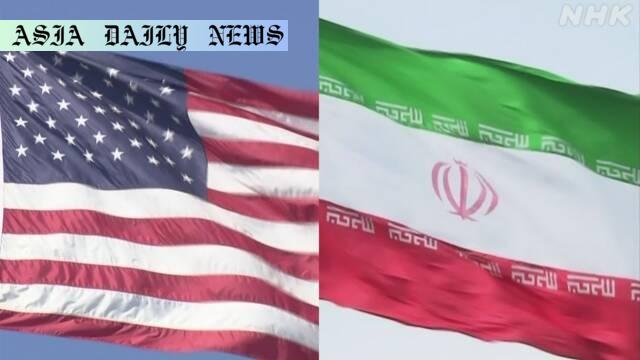Iran Sanctions: US President Trump vows to enact maximum pressure policies on Iran, focusing on nuclear restrictions and countering Middle East activities.
- Trump seeks to impose maximum pressure on Iran with tightened sanctions.
- Focuses include Tehran’s nuclear restrictions and blocking militia support.
- Expresses hope for reaching a diplomatic deal with Iran.

Introduction: Trump’s Strategy on Iran
US President Donald Trump recently announced a significant escalation in America’s stance toward Iran, emphasizing a policy of “maximum pressure.” This strategy includes tightening economic sanctions, restricting Iran’s nuclear agenda, and countering the nation’s influence across the Middle East through measures specifically targeting its militia support. These developments underscore Trump’s commitment to maintaining US interests while preserving a balance between military action and diplomacy with Iran.
Background: The Roots of Tension
The US-Iran relationship has been tumultuous for decades, marked by conflicting interests and a history of mistrust. Under Trump’s presidency, tensions escalated further due to the withdrawal from the Joint Comprehensive Plan of Action (JCPOA) — or the Iran Nuclear Deal — and the reintroduction of economic sanctions. These sanctions aimed to cripple Iran’s economy while discouraging its nuclear ambitions.
In 2020, these strained relations reached a boiling point when Trump ordered an airstrike killing a key Iranian military figure, Qasem Soleimani, heightening fears of a potential military confrontation. While some condemned the action as reckless, others viewed it as a necessary step to counter Iran’s increasing influence in the region.
Key Measures of the Maximum Pressure Policy
The memorandum signed by Trump on Tuesday lays out a comprehensive plan to increase America’s grip on Iran. Key measures include imposing stricter sanctions on important sectors of Iran’s economy, limiting their ability to fund nuclear advancements, and blocking financial and logistical support to Iran-linked militias and armed forces across the Middle East. The memo directs various governmental agencies to execute these policies swiftly and decisively.
Trump firmly conveyed that these steps are necessary to ensure national and global security. However, he remains open to discussing a potential diplomatic agreement with Iran — a sentiment echoed when he stated, “We will see whether or not we can arrange or work out a deal with Iran.”
The Broader Implications
This aggressive approach seeks to weaken Iran’s foothold in the Middle East, reducing its ability to fund extremist groups and destabilize nearby regions. Critics argue, however, that such policies may backfire by further isolating Iran and exacerbating anti-American sentiment in the region.
Additionally, tighter sanctions could have severe humanitarian consequences for ordinary Iranian citizens. The economic constraints already in place have caused inflation, unemployment, and shortages of essential goods. Intensifying such measures could further alienate the Iranian populace and undermine any trust in potential negotiations.
Diplomatic Prospects
Despite these firm actions, Trump expressed his preference for a peaceful resolution. His willingness to engage in dialogue suggests that the path of economic and military pressure serves as a leverage point rather than an ultimate goal. Trump’s assertion that “Iran cannot be allowed to possess nuclear weapons” underscores the administration’s primary concern — ensuring regional stability and security while deterring nuclear proliferation.
However, reaching an agreement with Iran would require concessions from both sides, a prospect that remains uncertain given Iran’s history of resistance to Western demands.
Conclusion
President Trump’s announcement regarding Iran represents a calculated effort to address a long-standing geopolitical challenge. While the commitment to maximum pressure aims to curtail Iran’s nuclear ambitions and regional influence, it also risks escalating tensions further. Balancing between such assertive measures and diplomatic overtures will be critical in determining the success or failure of these policies. Only time will tell whether this approach will yield substantial progress or deepen the existing divide between the US and Iran.



Commentary
Trump’s Approach: Balancing Strength and Diplomacy
President Trump’s decision to enforce maximum pressure on Iran reflects his administration’s firm stance on safeguarding US security interests. By directing measures that target Iran’s economy and military activities, he aims to curtail their nuclear ambitions and mitigate their influence in destabilizing the Middle East. This approach showcases a calculated use of hard power, aiming to force compliance while leaving room for negotiations.
However, this strategy also carries significant risks. Tightening sanctions further strains Iran’s already fragile economy, potentially exacerbating humanitarian concerns and fueling anti-US sentiment. While these measures might weaken Iran’s government, they could also rally domestic support for anti-American rhetoric, complicating diplomatic efforts. It’s a high-stakes gamble that relies on precise execution and international cooperation.
The Challenges of Achieving Long-Term Peace
The emphasis on diplomacy as a potential solution is commendable yet complex. Reaching a middle ground will require mutual trust, something historically absent in US-Iran relations. Additionally, Iran’s regional activities and alliances complicate the pursuit of peace, as its influence extends beyond its borders.
Ultimately, Trump’s policy underscores the delicate balance between being firm yet open to compromise. Whether through sanctions, military posturing, or negotiations, resolving the US-Iran standoff requires foresight, patience, and consistent engagement. One can only hope that this maximum pressure strategy leads to meaningful resolutions rather than exacerbating the already volatile situation.